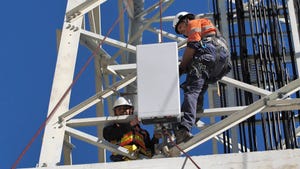US telco jobs are disappearing
The US telecom industry talks big but keeps getting smaller. The top US telcos – AT&T, Verizon and T-Mobile – keep costs down and profit margins high by shedding tens of thousands of jobs each year.

The top three telcos in the US are shrinking fast.
Across the industry, telcos are shedding employees as quickly as they can as they automate their networks, outsource tasks to other companies and do less when it comes to customer service.
To follow up on Iain's story about US telecom layoffs, here's the chart he used in his reporting, which compiled figures from each telco's public statements and regulatory filings. It details the major US and European operators and how their employee numbers have fallen since 2018.
2018 | 2019 | 2020 | 2021 | 2022 | 2023 | |
AT&T | 268,220 | 247,800 | 230,760 | 202,600 | 162,900 | 150,500 |
T-Mobile US (including Sprint) | 80,500 | 80,000 | 75,000 | 75,000 | 71,000 | 67,000 |
Verizon | 144,500 | 135,000 | 132,200 | 118,400 | 117,100 | 105,400 |
BT | 106,742 | 105,344 | 99,546 | 98,175 | 97,148 | n/a |
Deutsche Telekom | 215,675 | 210,533 | 226,291 | 216,528 | 206,759 | n/a |
Orange | 150,711 | 146,768 | 142,150 | 139,698 | 136,430 | n/a |
Telecom Italia | 57,901 | 55,198 | 52,347 | 51,929 | 50,392 | n/a |
Telefónica | 120,138 | 113,819 | 112,797 | 104,150 | 103,651 | n/a |
Vodafone | 98,996 | 95,219 | 96,506 | 96,941 | 98,103 | n/a |
This month, several European operators will share their quarterly results, and we'll update this chart in the coming weeks.
To keep an eye on Light Reading stories that detail layoffs and other jobs-related industry news, bookmark our Headcount section and check it often. If you have a news tip about layoffs at your company, please do let us know by emailing [email protected].
About the Author(s)
You May Also Like














